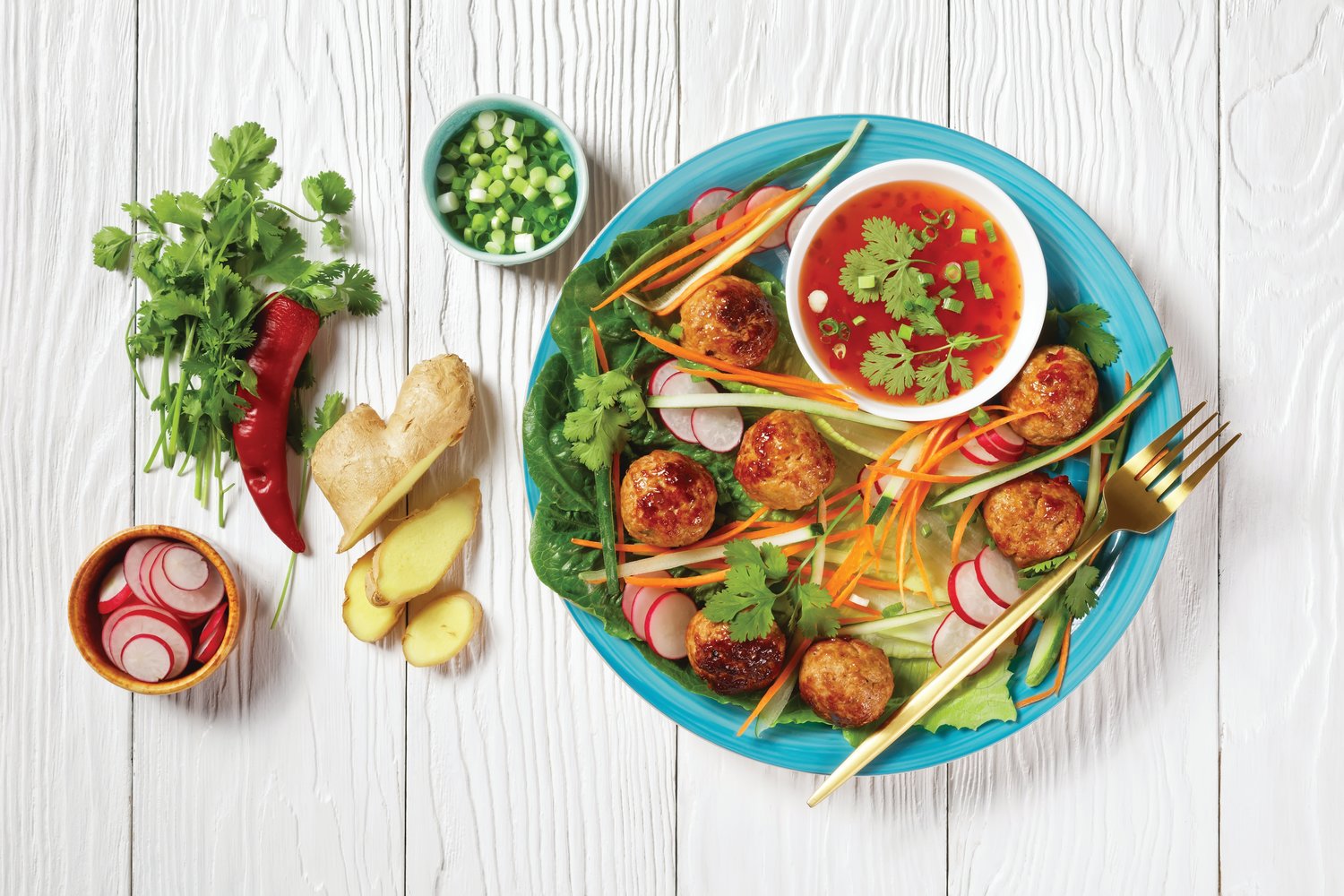Bánh mì (BUN-mee) is bread in Vietnamese, but also refers to the sandwich, a culinary fusion of French and Vietnamese, and an example of how linked food and history are.
A brief …
This item is available in full to subscribers.
We have recently launched a new and improved website. To continue reading, you will need to either log into your subscriber account, or purchase a new subscription.
If you had an active account on our previous website, then you have an account here. Simply reset your password to regain access to your account.
If you did not have an account on our previous website, but are a current print subscriber, click here to set up your website account.
Otherwise, click here to view your options for subscribing.
* Having trouble? Call our circulation department at 360-385-2900, or email our support.
Please log in to continue |
|

Bánh mì (BUN-mee) is bread in Vietnamese, but also refers to the sandwich, a culinary fusion of French and Vietnamese, and an example of how linked food and history are.
The sandwich story begins under French colonial rule, somewhere between 1858 and 1954.
The French couldn’t live without baguettes, and accompanying cold cuts, butter, cheese, and pâté. So wheat flour was imported, bakeries opened, they locally cured ham to French tastes and the Viet people trained to make the French favorites.
During this period, the Vietnamese also ate baguettes with butter and pâté, but that soon changed after the French left in the 1950s.
Because of supply issues, Viet bakers added rice flour to baguettes and the result was a crisper crust.
The cold cuts and pâté returned to the prior Asian seasonings. Cheaper mayonnaise replaced expensive butter. They added pickled carrots and radishes, along with chilies, cucumber, and cilantro.
The French baguette with charcuterie was now born on the streets of Saigon, a distinctive sandwich.
It wasn’t long until food carts across the country were selling these tasty and affordable sandwiches. After the fall of Saigon in 1975, Viet refugees arrived in American and European cities, and bánh mì became an international sandwich sensation.
Its flavor profile is quintessentially Vietnamese, combining aromatic, salty, sour, umami, and sweet with some heat in one sandwich.
BREAD: a hand span of an airy, crispy baguette or bolillo roll (toast the bread and keep a hinge).
PROTEIN: Vietnamese ham, steamed pork, meatballs, baked tofu, fried eggs, chicken.
VEGETABLES: sliced cucumber, pickled carrot, and daikon.
HERBS & SPICES: crisp cilantro, mint, basil, and/or fresh chilis.
FATS: pâté, butter, mayonnaise, avocado.
SEASONINGS: Salt, pepper, soy sauce, liquid aminos.
Don’t overstuff with protein, because a balanced bánh mì is a salad in a sandwich, with a 1-to-1 ratio of protein to veggies.
Prep the bread: Rub the crust with wet hands and crisp in a 350 F oven for about 5 minutes. Let it cool, slit the bread open, leaving a hinge, hollow out some insides to make room for the filling.
Filling: Spread fat of choice on, season the fat, layer the filling on the bottom and top with veggies, pickles, chilies and herbs.
Eat: Close and cut crosswise or keep whole. Enjoy!
Bánh mì Xiu Mai (pork meatball sandwich) — pork meatballs marinated in a local flavored sauce, usually with a tomato, fish, or soy sauce base. Serve with cilantro to get the true Vietnamese flavor.
Bánh mì thit nuong (barbecue pork sandwich) — A very popular Vietnamese Sandwich for meat lovers. This is a grilled pork belly or grilled pork shoulder. It’s an authentic style and one of the true original Banh mi from the 1950s.
Bánh mì cha cá (fish patty sandwich) — Fried fish cakes placed in the baguette, served with Sriracha sauce, seasoning, and carrot/daikon pickles with veggies.
Bánh mì chay (vegan sandwich) — eaten twice a month during the full and half-moon celebrations. Most Buddhist followers have a vegan day twice per month.
Makes 8 large meatballs
Serve these tasty meatballs wrapped in soft lettuce leaves, with Spicy Hoisin Garlic Sauce, carrot pickles, and a fresh herb platter. They’ll also make an excellent filling for a bánh mi sandwich.
1 lb ground beef
2 tablespoons tomato paste
1 tablespoon Bragg’s Liquid Aminos
1 tablespoon fish sauce
1 tablespoon fresh ginger, minced
2 cloves garlic, minced
¼ teaspoon cayenne pepper
1 teaspoon Chinese five-spice, recipe follows
1 tablespoon tapioca starch
1/3 cup raw cashews or peanuts, chopped
1/3 cup unsweetened coconut flakes
¼ cup dehydrated onion flakes
1 tablespoon star anise pieces
1 tablespoon fennel seeds
1 tablespoon ground cassia cinnamon
1 teaspoon whole cloves
1½ teaspoons Sichuan pepper or black peppercorns
Toast the star anise, cloves, peppercorns, and fennel. Mix in the cinnamon and using a spice grinder, grind into a powder.
Preheat the oven to 425 F. Line a rimmed baking sheet with parchment paper.
In a mixing bowl, with clean hands, combine the ingredients with the ground beef, as you would for meatloaf. Divide evenly into two large balls. Continue to divide by halves until you have eight balls. Slightly press each ball into a patty.
Bake for 12 to 15 minutes. The juices should run clear with no raw or underdone meat.
This recipe is a preview of what’s next for the Food Co-op Community Cook! To learn more about Community Cook and to find more recipes, visit foodcoop.coop/community-cook.
(Sidonie Maroon is culinary educator at The Food Co-op; abluedotkitchen.com. Follow Sidonie on The Food Co-op’s Facebook group, Cooking with the Co-op.)